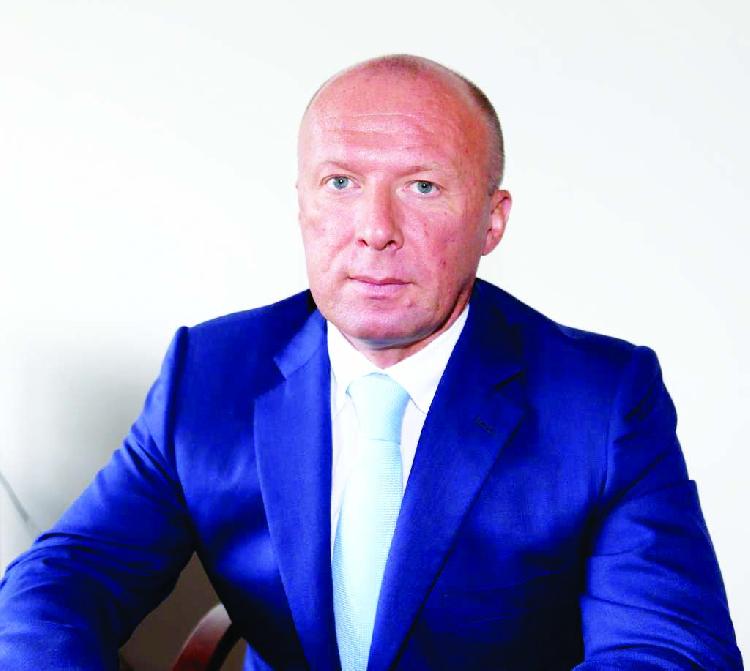Africa-Press – Namibia. THIS year, world uranium prices demonstrate a good recovery dynamic after an almost decade-long recession, although its current level is still not compatible with the 2000s highs.
This upsurge is principal for the Namibian economy. In 2020, Namibia ranked third in terms of uranium mining volume after Kazakhstan and Australia. New uranium projects will help Namibia to overcome the Covid-19 crisis and provide a sustainable basis for growth in the long term. Clearly, demand for uranium will continue to grow as new nuclear power plants are built.
According to the World Nuclear Association forecast, by 2030 the global nuclear power plant capacity should increase by 70 GW, up to 462 GW. Much of this dynamic derives from China with the largest nuclear energy development programme in the world. Other nations, surely, will also make their contribution, taking into account some “newcomers”.
Today, the global community has returned to discussing the prospects for nuclear energy, as this kind of energy is stable and “green”. Some European nations intend to include nuclear power generation in their green investment classification.
During the recent UN international summit on climate change, COP26 in Glasgow, prominent experts, including International Atomic Energy Agency (IAEA) director general Rafael Grossi, stressed the significant role of nuclear power in decarbonising the world economy.
Uranium was among the six minerals that have been declared strategic by the Namibian government. The development of new deposits will make a significant contribution to ensuring the economic security of Namibia and will contribute to the further sustainable development of the nation. NATURE-FRIENDLY METHOD
In 2010, at the initiative of the Namibian side, geologists from Russian company Rosatom and the Russian Institute of Mineral Resources identified promising uranium deposits of the Kazakh type. In 2021, the pre-feasibility study project confirmed the positive economic result in the future. The deposits could be developed via the most advanced, environmentally friendly and economically viable in-situ leaching (ISL) method.
Uranium One has been successfully using this method for many years at joint ventures with NAC Kazatomprom JSC in Kazakhstan. As a leader in the production of natural uranium, this Asian country provides more than 40% of its global volume (19 800 tonnes in 2020). All uranium in Kazakhstan is mined using the ISL method.
In addition, Rosatom’s mining division has successfully used the ISL method in uranium mining in two regions of Russia, Kurgan region and Buryatia. In 2020-2021 alone, Russian regulators approved projects to develop three uranium deposits in Buryatia and Trans-Urals using the ISL method, noting that “it is the most environmentally safe and cost-effective mining method”.
IAEA has recognised this technology as the most environmentally friendly. Currently, the share of uranium production by the ISL method has reached 60% worldwide. Indeed, if we compare this technology with open pit or underground mining methods, there are significant advantages. There is no change in the geological condition of the subsurface, as no mining mass is excavated. There are no subsidence and earth surface disturbances, no dumping of off-balance ores and waste rock, and no tailings dams. The natural radioactivity of the ore body remains deep underground.
We expect Namibian regulators to take these considerations into account when deciding whether to proceed with our company’s project. Headspring Investments has been conducting exploration work in Namibia since 2010 and has eight exploration licences. REGULATIONS
Our company complied with all the rules stipulated by Namibian law and the company provides information to the Ministry of Mines and Energy on a regular basis. During the entire period of explorations, the ministry has not received any instructions or complaints concerning the quality and conformity of the work performed.
Effective management of social, economic and environmental impacts is of crucial priority for Uranium One in all ongoing projects. We rely primarily on generally recognised international norms and standards, ensuring strict compliance with the requirements of the legislation of the countries and regions of our presence.
COMMON INTEREST With the participation of expert institutions, we have drawn up a guide for the management of impacts – an environmental management plan. It includes the results of baseline studies, a scale of potential impacts and a set of measures to prevent or mitigate them.
These are measures for the preservation of flora and fauna, responsible waste management, protection of surface and ground waters, ensuring radiation safety, preventing negative impacts on the health of the project personnel and the population, etc.
To ensure radiation safety, a special radiation management plan has been developed and we are currently conducting an additional environmental impact assessment to study the impact of the ISL method on groundwater in the region.
Avoiding contamination of the water used by the local population is the highest priority, thus, in order to effectively manage water resources, a study of the characteristics of the aquifer was carried out, as well as the model of groundwater flow on a regional scale.
The modelling results showed that the total rate of groundwater flow in the region is quite low – just one to three metres per year, while the rate of movement of man-made waters is three times lower.
The area of movement of technogenic solutions will initially contribute to the deposition of uranium, and the resulting sediment will prevent the spread of pollution. At the same time, the solutions will be cleaned in a natural way. Thus, the well design is safe and reliably prevents any mixing of aquifers.
For More News And Analysis About Namibia Follow Africa-Press






